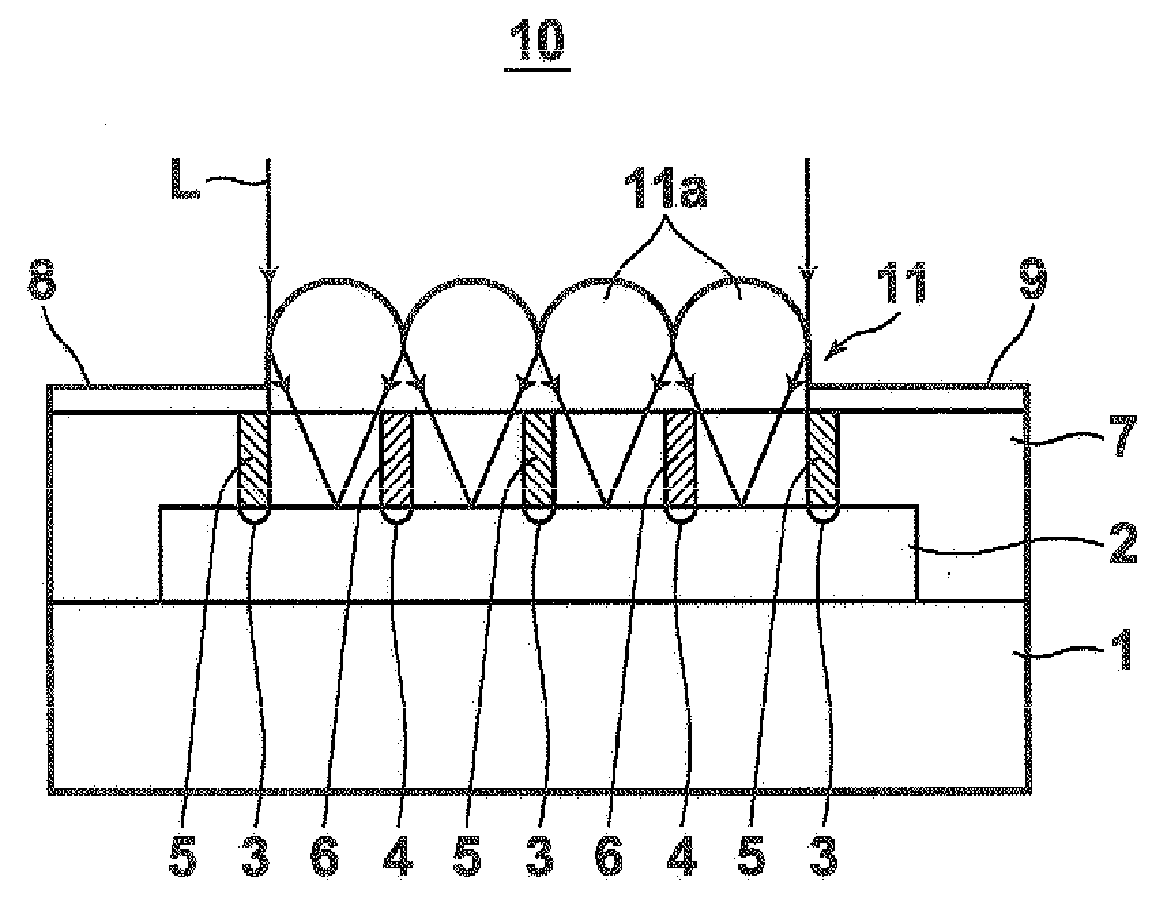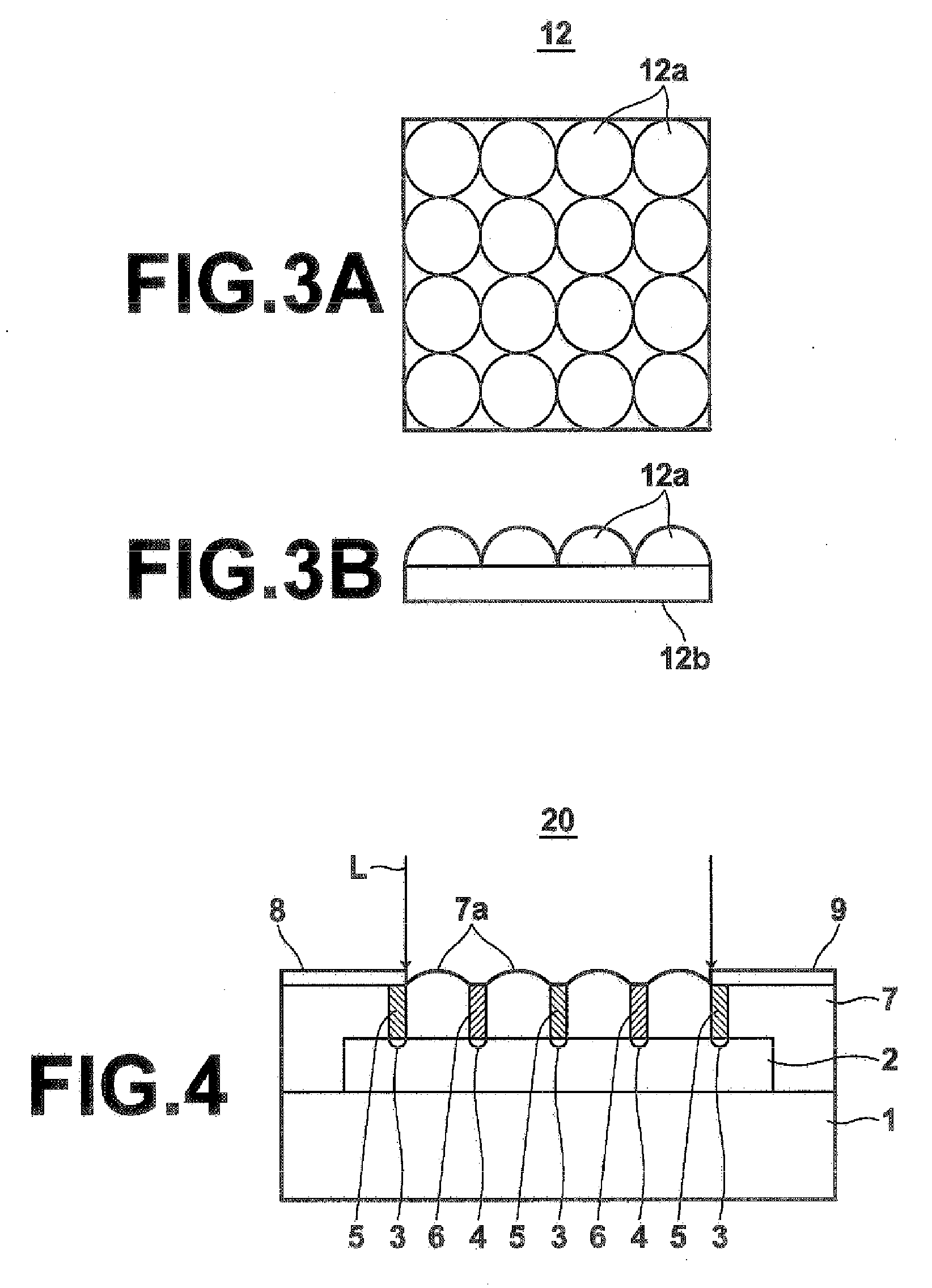Photodiode and manufacturing method of the same
a photodiode and manufacturing method technology, applied in the field of lateral photodiodes, can solve the problems of natural decrease of the sensitivity of the photodiode, the reduction of the electrode region of the semiconductor, and the reduction of the light receiving efficiency correspondingly, so as to achieve the effect of high sensitivity lateral photodiodes
- Summary
- Abstract
- Description
- Claims
- Application Information
AI Technical Summary
Benefits of technology
Problems solved by technology
Method used
Image
Examples
first embodiment
[0040]FIG. 1 is a schematic side view of the lateral photodiode 10 according to the present invention. As illustrated in the drawing, the photodiode 10 includes: a substrate 1; a semiconductor layer 2, formed on the substrate 1, for receiving input light L (detection target light); p-type regions 3 and n-type regions 4 formed parallel to the substrate 1 in the semiconductor layer 2; thin p-type electrodes 5, each connected to each p-type region 3; thin n-type electrodes 4, each connected to each n-type region; a transparent insulation layer 7 formed so as to cover the semiconductor layer from above; an electrode 8 which connects a plurality of p-type electrodes 5; and an electrode 9 which connects a plurality of n-type electrodes 6.
[0041]A microlens array 11 is formed on the insulation layer 7. FIG. 1 illustrates a side cross-section shape of the microlens array 11, and planar shape and side shape are like those illustrated in FIGS. 2A and 2B respectively. That is, the microlens arr...
second embodiment
[0046]the present invention will now be described with reference to FIG. 4. In FIG. 4, elements identical to those in FIG. 1 are given the same reference numerals and will not be elaborated upon further here unless otherwise specifically required (the same applies hereinafter).
[0047]In a photodiode 20 according to the second embodiment, a plurality of microlenses 7a is formed on the surface portion of the transparent insulation layer 7. Each of the microlenses 7a is formed in the portion between each of the p-type electrodes 5 and n-type electrodes 6, and focuses the input light L in a manner so as not to be directed to the p-type electrodes 5 and n-type electrodes 6, as in the microlenses 11a in FIG. 1. Therefore, in this case also, the input light L is prevented from being absorbed by the p-type electrodes 5 and n-type electrodes 6, so that the light receiving efficiency is increased and high sensitivity of the lateral photodiode 20 is realized.
[0048]In the present embodiment, the...
PUM
 Login to View More
Login to View More Abstract
Description
Claims
Application Information
 Login to View More
Login to View More - R&D
- Intellectual Property
- Life Sciences
- Materials
- Tech Scout
- Unparalleled Data Quality
- Higher Quality Content
- 60% Fewer Hallucinations
Browse by: Latest US Patents, China's latest patents, Technical Efficacy Thesaurus, Application Domain, Technology Topic, Popular Technical Reports.
© 2025 PatSnap. All rights reserved.Legal|Privacy policy|Modern Slavery Act Transparency Statement|Sitemap|About US| Contact US: help@patsnap.com



